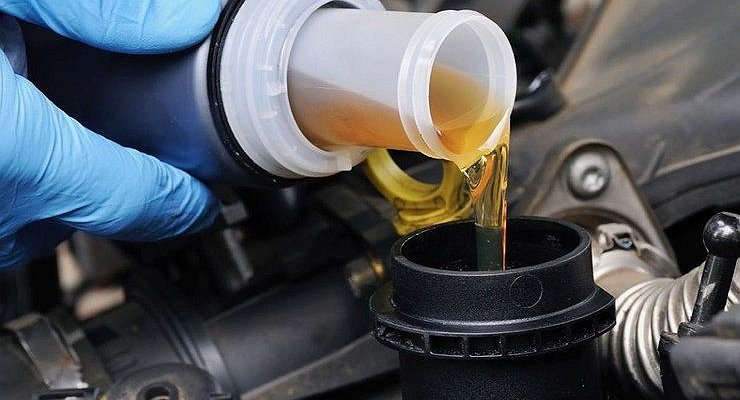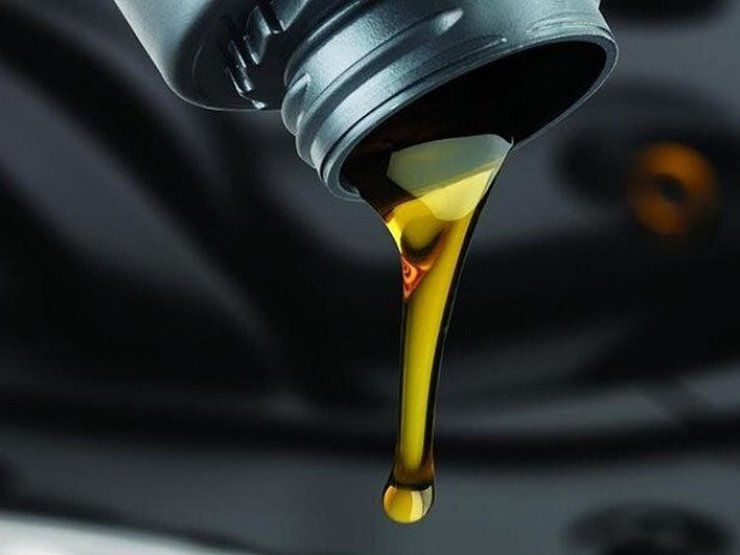What is the best oil to top up the engine in the summer?
- July 15, 2022
- 0
Motor oil is the blood of a car engine. And how long and happily you live soul to soul with your vehicle depends directly on its composition. Many
Motor oil is the blood of a car engine. And how long and happily you live soul to soul with your vehicle depends directly on its composition. Many

When selecting motor oil, it is absolutely necessary to take into account the climatic conditions of the region where it will be used. And even if the oil poured into the engine is quite universal in its parameters, it will not be superfluous to replace it by the hot season. But for what?
First you need to learn how to correctly read the SAE marking, which is on the oils of all manufacturers. This is one such alphanumeric code that helps the motorist understand the characteristics of the lubricant and its operating parameters at certain ambient temperatures. For example, 10W-40 – in this case we are dealing with universal grease. W is the initial letter of the English word Winter, and the number 10 in front of it is an indicator at which sub-zero temperature the oil viscosity will be sufficient for the engine to work properly (in our case it is −30). The number 40 is the maximum positive temperature allowed. In other words, oil with this marking can be used at temperatures from -30 to +40 degrees.
In addition, it is extremely important to look at and read these parameters. Because, for example, in a warm climate, where the daytime temperature can reach +50, this lubricant works at the limit of its capabilities. After all, the heat in the engine compartment is added to the heat outside – and it is 15-20 degrees higher. This means that for regions with a similar climate, thicker oils are best suited, which will not flow like water but maintain a viscosity normal for the operation of rubbing engine parts. These oils are labeled 5W30, but if it’s very hot where you’re going, it’s best to use 5W40 oil to make sure your engine is safe.
If a car is used in the city in the summer and gets stuck in traffic even more often, then he can only dream of good ventilation of the engine compartment. The engine, as well as the oil, only receive extra good cooling from the oncoming air flows on the highway.
And idling in a traffic jam city, where it gets too hot around the house and the asphalt under the hood for the oil the automaker recommends to work properly. Therefore, some motorists prefer to top up with 5W40 oil before summer. For large cities, this may be the best choice.
Of course, if the decision is made to change the oil before the summer, there can be no savings. Use only high-quality lubricants recommended by the vehicle manufacturer. Otherwise, your desire to help the engine will become a sentence. And in the present day repairing cars is a very expensive affair.

When selecting motor oil, it is absolutely necessary to take into account the climatic conditions of the region where it will be used. And even if the oil poured into the engine is quite universal in its parameters, it will not be superfluous to replace it by the hot season. But for what?
First you need to learn how to correctly read the SAE marking, which is on the oils of all manufacturers. This is one such alphanumeric code that helps the motorist understand the characteristics of the lubricant and its operating parameters at certain ambient temperatures. For example, 10W-40 – in this case we are dealing with universal grease. W is the initial letter of the English word Winter, and the number 10 in front of it is an indicator at which sub-zero temperature the oil viscosity will be sufficient for the engine to work properly (in our case it is −30). The number 40 is the maximum positive temperature allowed. In other words, oil with this marking can be used at temperatures from -30 to +40 degrees.
In addition, it is extremely important to look at and read these parameters. Because, for example, in a warm climate, where the daytime temperature can reach +50, this lubricant works at the limit of its capabilities. After all, the heat in the engine compartment is added to the heat outside – and it is 15-20 degrees higher. This means that for regions with a similar climate, thicker oils are best suited, which will not flow like water but maintain a viscosity normal for the operation of rubbing engine parts. These oils are labeled 5W30, but if it’s very hot where you’re going, it’s best to use 5W40 oil to make sure your engine is safe.
If a car is used in the city in the summer and gets stuck in traffic even more often, then he can only dream of good ventilation of the engine compartment. The engine, as well as the oil, only receive extra good cooling from the oncoming air flows on the highway.
And idling in a traffic jam city, where it gets too hot around the house and the asphalt under the hood for the oil the automaker recommends to work properly. Therefore, some motorists prefer to top up with 5W40 oil before summer. For large cities, this may be the best choice.
Of course, if the decision is made to change the oil before the summer, there can be no savings. Use only high-quality lubricants recommended by the vehicle manufacturer. Otherwise, your desire to help the engine will become a sentence. And in the present day repairing cars is a very expensive affair.
Source: Avto Vzglyad
I’m Sandra Torres, a passionate journalist and content creator. My specialty lies in covering the latest gadgets, trends and tech news for Div Bracket. With over 5 years of experience as a professional writer, I have built up an impressive portfolio of published works that showcase my expertise in this field.